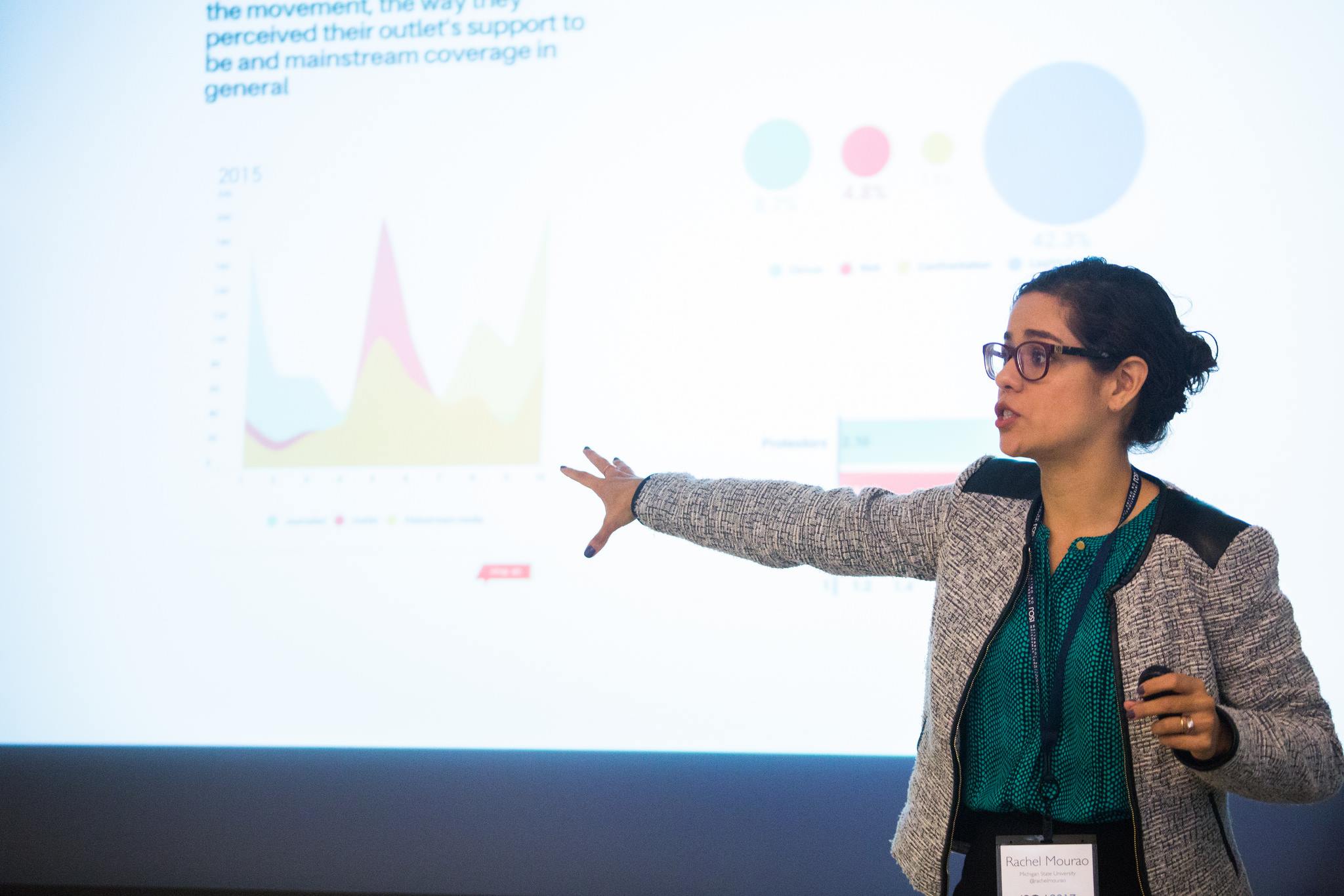Ongoing studies by a researcher and journalism educator at Michigan State University reveal that public support and perception of the Black Lives Matter movement is affected by the way reporters cover BLM protests.
While journalists are key to U.S. democracy, Assistant Professor of Journalism Rachel Mourão said they also shape attitudes toward Black civil rights protests based on the focus of their coverage. Mourão drew her conclusions from content analyses of large circulation and local papers starting with the 2014 Ferguson unrest up to the death of George Floyd 2020. Her research also analyzed the effects of media framing and visual communication on BLM support and on social media behaviors.
Mourão worked with co-researchers and journalism scholars Danielle Brown from the University of Minnesota and George Sylvie from the University of Texas Austin. Findings were published in Digital Journalism, Mass Communication and Society, and the International Journal of Communication, as well as Journalism and Journalism Practice.
“Media do matter,” Mourão said. “Our goal was to see the extent to which coverage interacts with pre-existing attitudes that people have. We saw that the way a story is framed has a very large impact on how people view protests, and that it shapes their support for a social movement.”
Patterns of coverage
Mourão’s studies and resulting publications were initially inspired by her interest in Brazil’s transition to civilian government in the 1980s. A native of Brazil, she paid attention to a new wave of protests in the early 20-teens while working on her doctorate in journalism at the University of Texas at Austin.
As a consumer of news, Mourão noticed that as protests changed, so too did media coverage. Certain characteristics of protests—like violence or disruption—were often central to coverage, while more peaceful demonstrations captured less attention. A year later, as Ferguson unfolded, she set out to explore her observation by gathering and analyzing data from newspapers.
“Journalists focused more on violence, deviant behavior, and confrontation with police rather than on the protestors themselves,” she said. “That only began to change a little bit after Darren Wilson wasn’t indicted in Michael Brown’s death. After that, journalists started to focus more on cause and police brutality.”
Mourão said journalism norms and practices largely drive patterns of coverage in mainstream media. Concerns for bias and objectivity cause journalists to pursue official sources during disruptive events, and to report observable incidents of violence, confrontation or destruction rather than origins or root causes. Context generally only comes afterward, and most noticeably, after legal action or resolution related to the events.
“Reporting that only focuses on tactics or actions affects support for the movement,” Mourão explained. “If an audience continually reads how dangerous and violent a movement appears to be, they’re less likely to join even if they agree with the cause. They’re also less likely to see that on balance, the movement consists of peaceful demonstrations.”
The lag time between initial reporting and reporting on the demands and grievances of a social justice movement is also pivotal to attitude formation.
“Media consumers aren’t blank canvases,” she said. “They have opinions and pre-existing beliefs that influence how they digest messages. It’s critical to understand that the way a story is framed and covered affects how someone perceives a movement, and whether they support it or not.”

Mourão presents on her research at a recent conference. Photo by Mary Kang/Knight Center.
Finding context
Mourão has been steadily expanding her portfolio of research related to protest coverage. One of her more recent projects involves MSU undergraduates and an analysis of coverage following George Floyd’s murder.
As director of journalism Ph.D. studies at MSU, Mourão stays abreast of journalism practices, and has noted discussions among journalists and in newsrooms about their approach to covering social justice movements. She plans to share what she’s hearing, as well as the findings of her research, as she trains and educates new journalists through the MSU School of Journalism.
“We have a lot of young reporters who have clear, critical views of how the press may not be properly covering movements like BLM,” she said. “We need to examine whether we are showing them how to provide coverage that is more contextual.”
Journalism programs, she said, can be a place of experimentation since they are not traditionally bound by industry pressure. Programs, too, can be on the vanguard of instilling clear guidance and techniques for covering volatile, unfolding events in an informative manner.
“We have a lot of freedom to create new formats and to create potentially better ways to provide coverage that is more contextual,” Mourão said. “Black Lives Matter has given us the opportunity to reconsider journalistic norms and practices and to discover ways to do better within the characteristics of the events we’re covering.”
Mourão’s recent protest research has been supported by grants through the Association for Education in Journalism and Mass Communication, and by Michigan State University Honors College.
By Ann Kammerer
